Many of us would have seen elephants before, whether it’s at a zoo or at animal shows in this part of the world – but unlikely in a setting like this. We visited Phuket Elephant Sanctuary (PES) on Day 3, a reserve set up to rehabilitate these very gentle giants who’d suffered years of abuse at the local industry in Thailand. The Sanctuary is a Save Elephant project and apparently the only ethical elephant reserve on the island. No rides, no animal tricks, no shows, no funny business. Elephants roam freely and visitors follow them rather than the other way round.
What is the abuse that these giants suffer in industry? Well, in order for elephants to be put to work, they have to be firstly broken in spirit, then forcibly trained to work – routinely through cruel methods of inflicting punishment to get these giants to obey. As the introductory video to elephants in Thailand showed, elephants are forced to work in the border – and when they are too worn down or old, get further sold to operators to provide ‘rides’ to tourists, or to entertain tourists by painting, engaging in circus acts and so on. Those rides you see in tourism brochures where elephants carry two adults? Well, let’s just say each adult weighs 75KG – but the iron chair itself weighs another 100kg – which means that the elephant itself has to carry 250kg already on her back, and routinely for hours everyday. No wonder these giants develop permanent injuries.
The elephants in PES are saved from these industries by buying them – a young elephant can cost as much as 2 million THB, while an old one which is deemed less useful by industry costs 400,000THB. After which, they undergo a period of recovery by the sanctuary’s staff and supporting doctors. The fairly hefty admission fees – 9,000THB for the four of us – is due in large part to build up sufficient funds for the sanctuary to continue their conversation efforts.
The sanctuary staff love their elephant friends, and it clearly shows with their sharing of stories of the former lives of each of the six elephants in their sanctuary, and how they were rescued. The oldest is a female in her late 60s named Dok Gaew, and who was badly injured from years of providing tourist rides and near death before she was rescued and nursed back to health by the staff. Simply put, in this Sanctuary you don’t get to see elephants do anything that is not in their natural behavior or inclination – which means we get to observe them only, apart from a short feeding segment at the start of the visit where they gobbled up baskets of fruit with our assistance.
The 30 acre park can hold up to 20 elephants, and PES currently has six as they only opened in November 2016. The sanctuary showed many signs of ongoing construction to build additional shelters and activity areas for the elephants.
Specific notes on our visit:
There were about two dozen visitors on our Monday morning visit. Our driver first brought us to the sanctuary office along the main road where we took care of payment and administration and mini-group assignment before being ferried in four-wheel drives to the sanctuary itself, which is about 5-6 minutes away via bumpy dirt roads.
We next had our briefing, where staff explained the purpose of the PES, its mission, the do’s and don’t’s, and followed finally by a moving video about how awful are elephants treated in industry and the cruel methods used to train them, and the real consequences of elephant rides in particular.
The three mini-groups were then led to different observation areas around the reserve where we could observe them socialize, feed and generally laze about. Each elephant was also minded by a mahout, but unlike what you’ll see in elephant shows, the mahouts carried no sticks or instruments – I got the sense that they were really there to make sure that humans behave around these giants!
The vegetarian lunch prepared by PES staff was, like the meals at John Gray’s Hong by Starlight, were amazing.
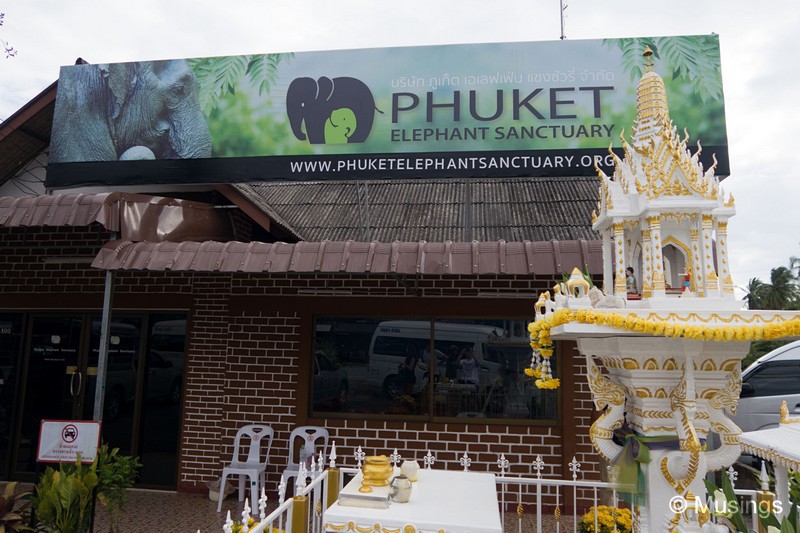
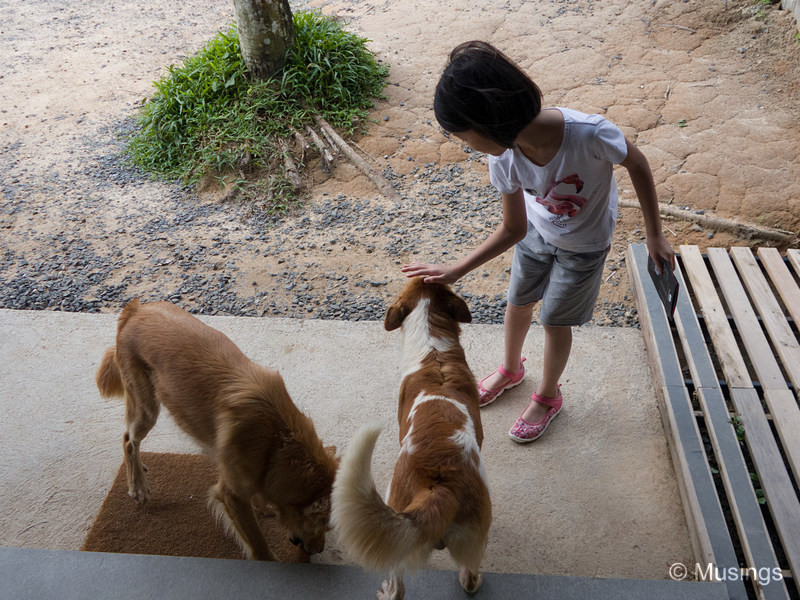
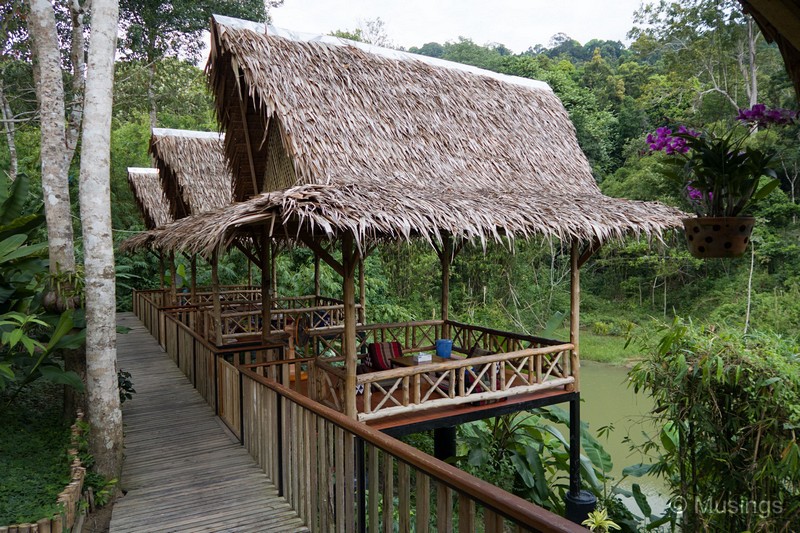
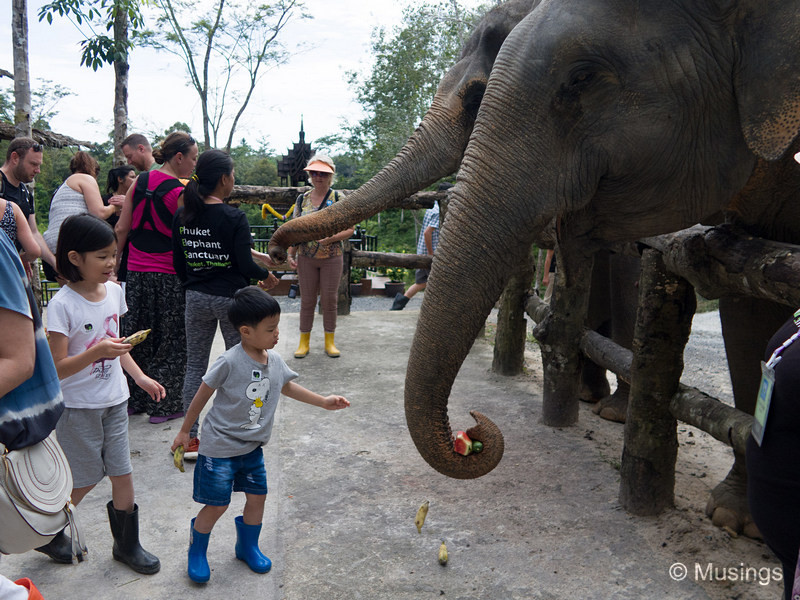
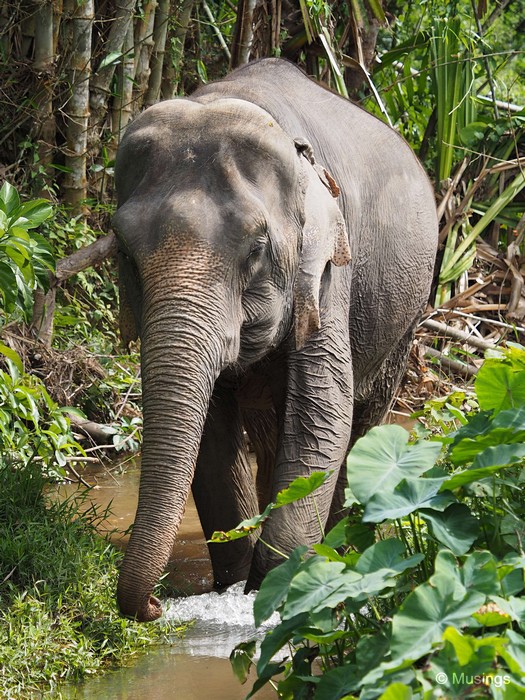
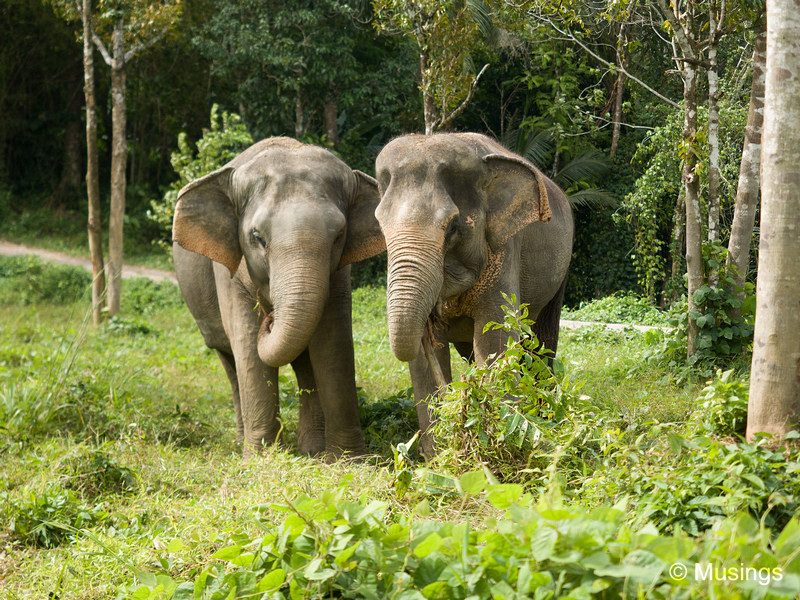
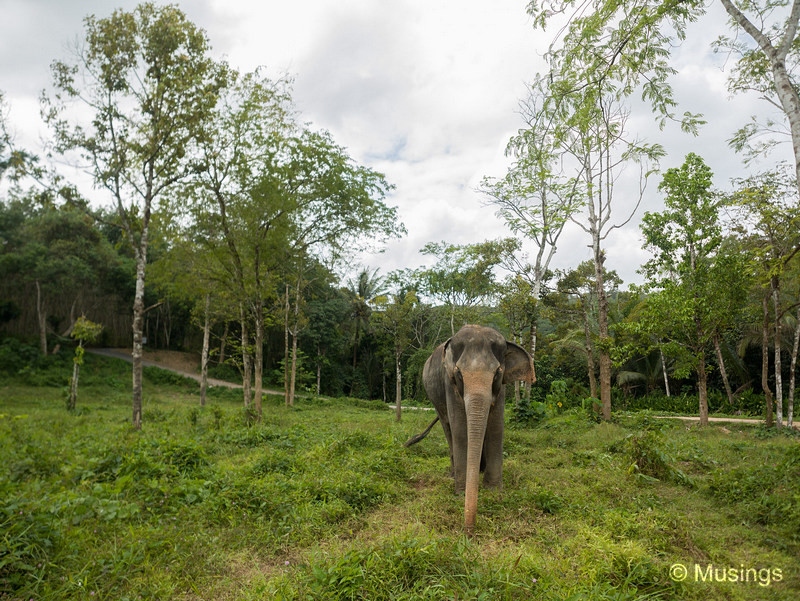
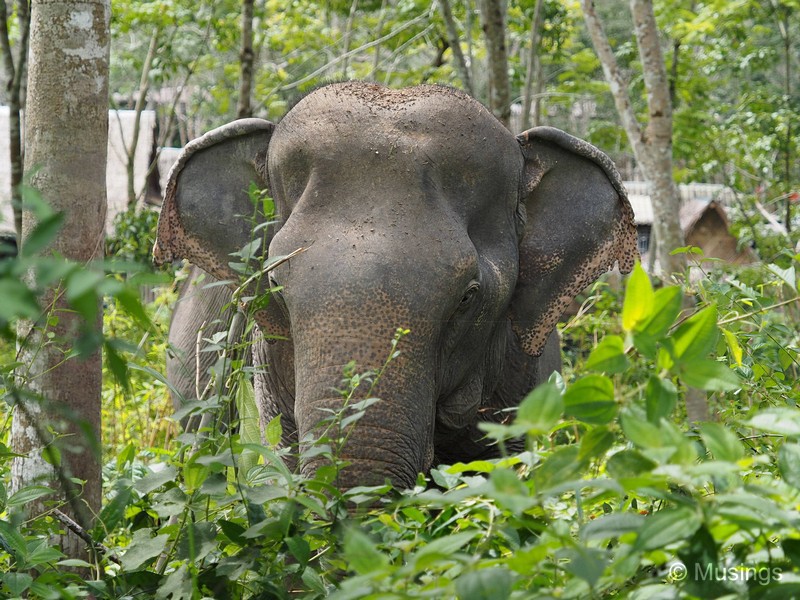
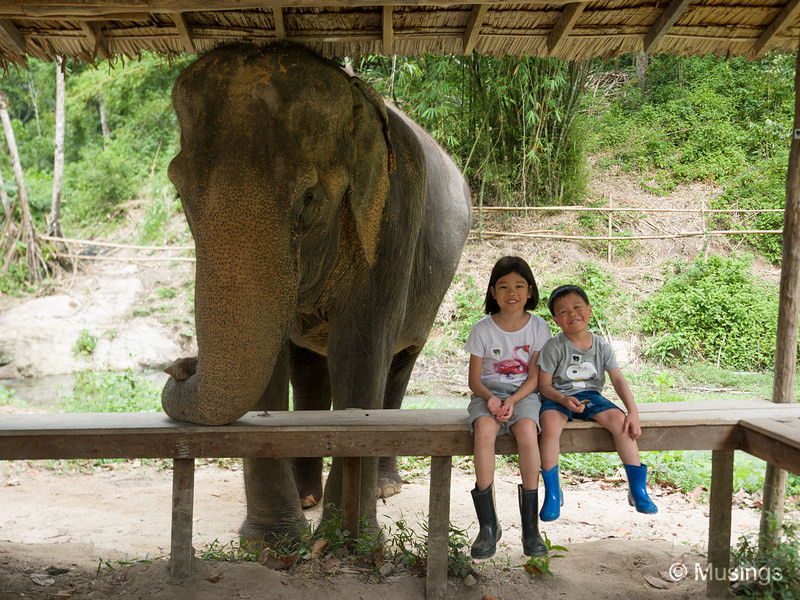
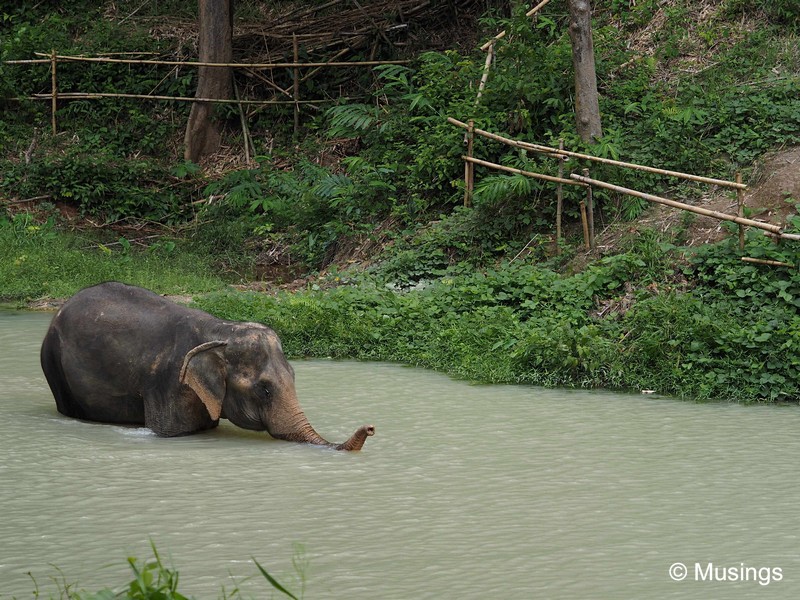
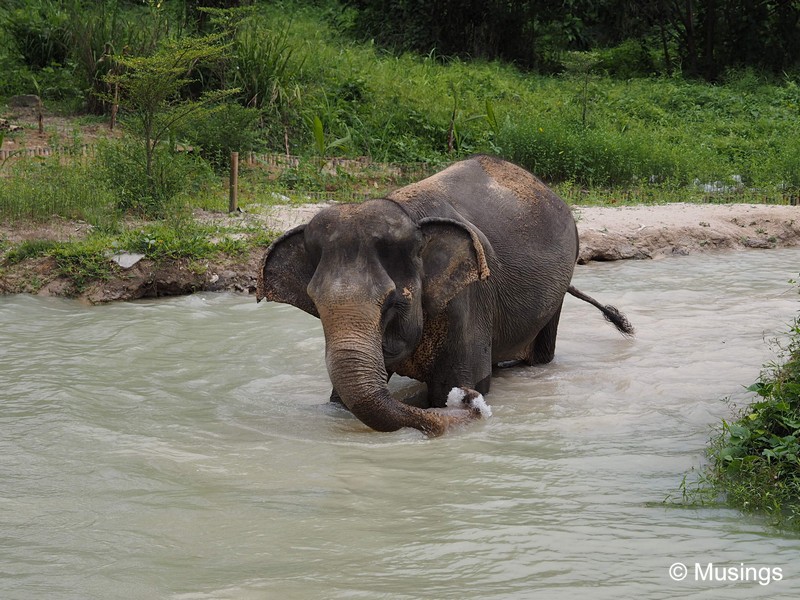
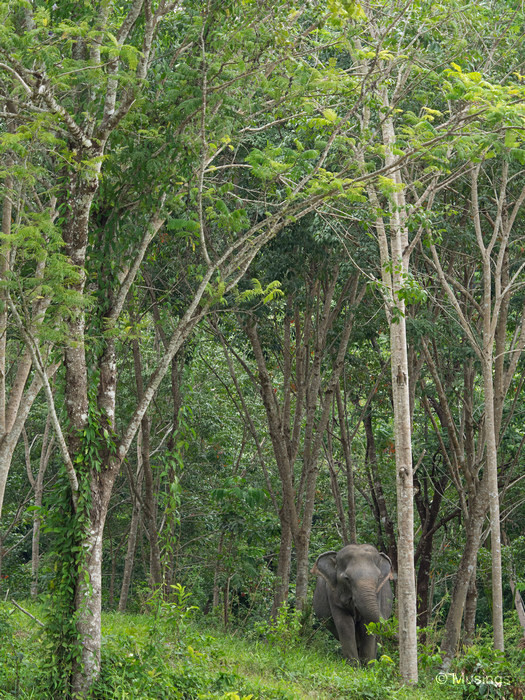
Credits especially too to the group today, and that comprised mostly of Caucasians with just a few Asians (including us) who showed the utmost respect and earnestness to hear their stories.
Ironically, the loudspeaker tourists again from a certain country up north were nowhere to be found in today’s visit. As our driver quipped – they were all visiting the other elephant showparks taking rides.
Updated 24 Dec 2017: coincidentally, these loudspeaker tourists just got involved elephant ride incident, right on the last day we were in Phuket.
Day 4 at Splash Water Jungle Park in the next post!
Recent comments